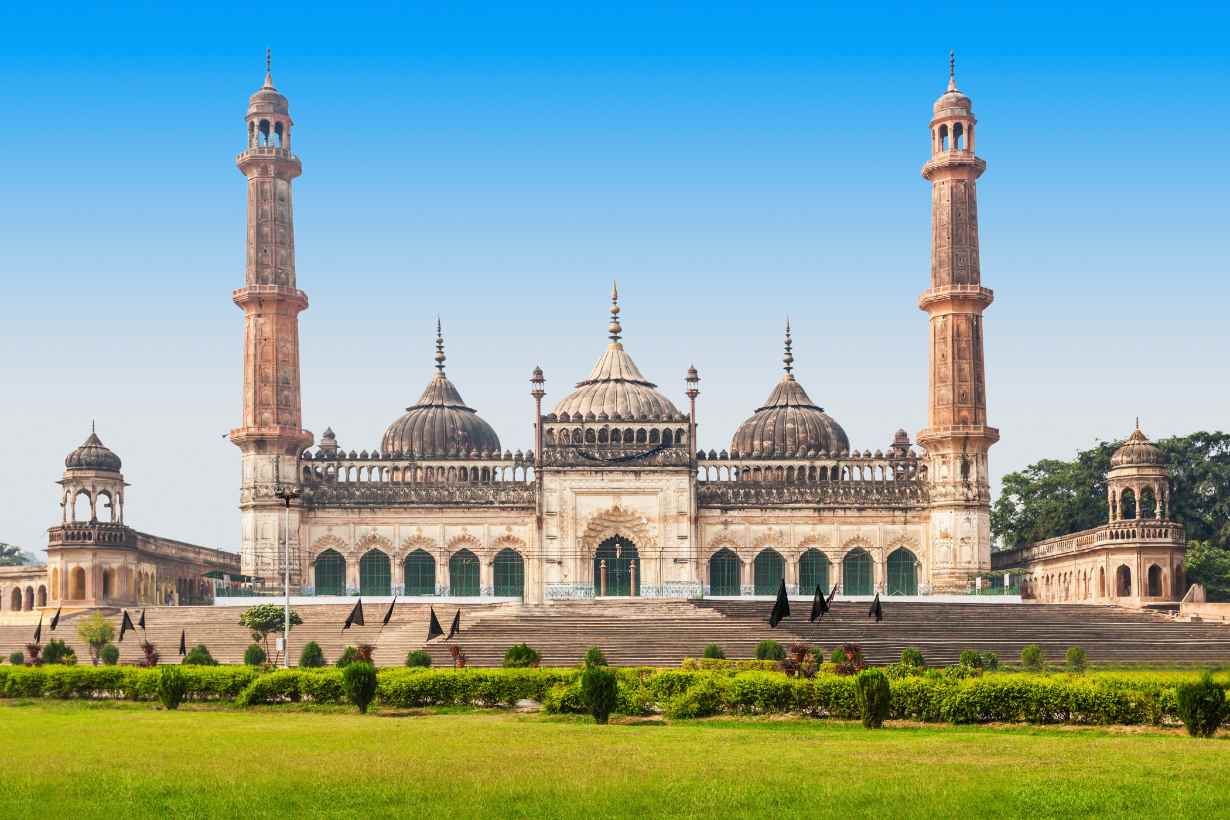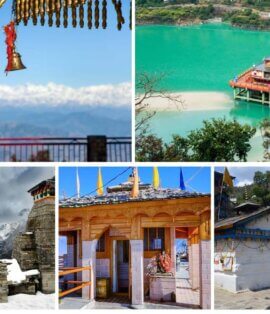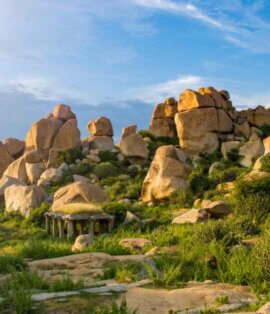The Bara Imambara in Lucknow is among the most beautiful and signature structures of Indian architecture. It shows the vision of the Nawabs of Awadh. It also represents the culture and architecture of the region. The Bara Imambara dates back to the 18th century. It is known for its large central hall, the Bhool Bhulaiya, and the interesting legend that goes with it.
Significance of Bara Imambara in History
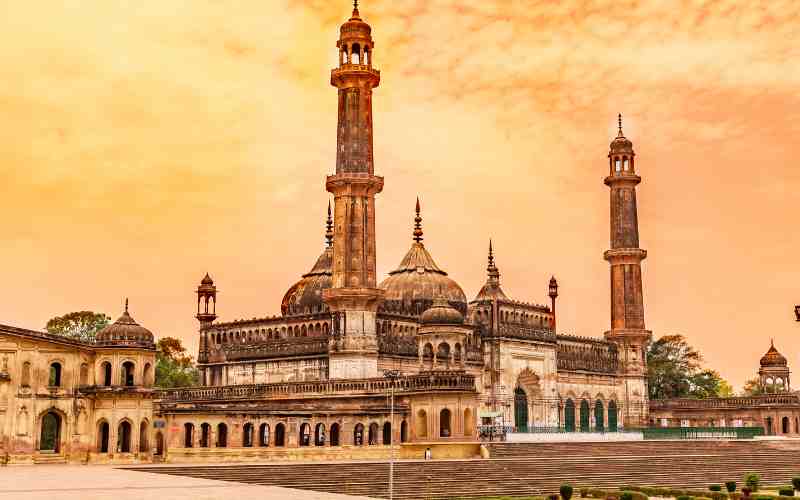
The tale of the Bara Imambara begins in 1784 with the terrible famine that beset the Awadh province. Nawab Asaf-ud-Daula, the ruler of Awadh, hired 20,000 men to build the shelter. This created jobs for the people of Lucknow. The Imambara is not a mosque or tomb. It is a large hall for Shia Muslim prayers. This is especially true during Muharram.
The construction of the Bara Imambara was started in 1784 and took nearly 11 years to complete. Twenty thousand people worked day and night to build the monument. The large central hall measures over 50 by 16 meters and is seen as a masterpiece. The hall is unique because of its shape. It is built without any support pillars. It is the largest filled arched hall in the world, except for those held by columns.
The Bhool Bhulaiya: A Maze of Enigma
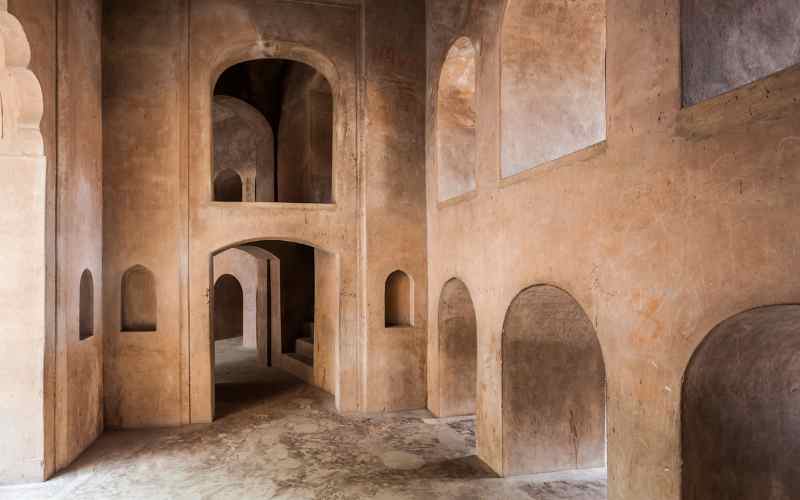
One of the most interesting parts of the Bara Imambara is the Bhool Bhulaiya. It has about 1,000 confusing passages and 489 identical doorways. People walking by often get lost in this confusing maze of dark hallways. Most of the paths and doors look very similar. It is said that the British sealed off many entrances to the Bhool Bhulaiya. They also blocked some underground tunnels. They did this because they feared these tunnels linked the Bara to other major cities.
Architectural Marvel
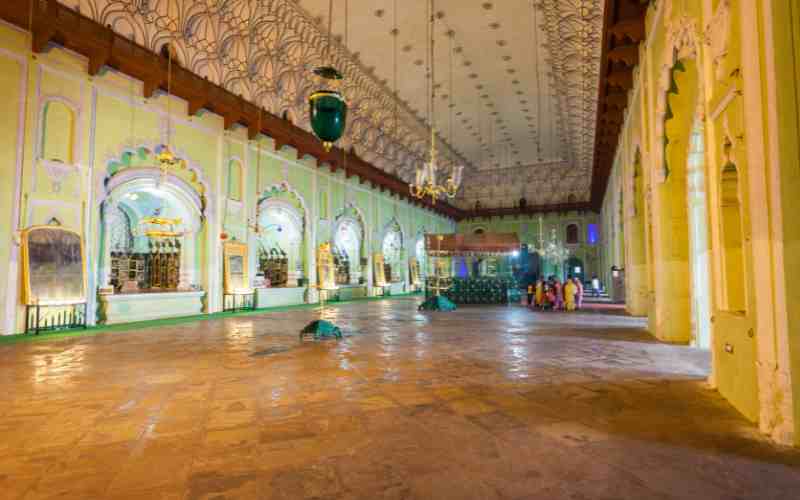
The Bara Imambara, with its exquisite Islamic architecture influenced by the Persian and Mughal styles, is breathtaking. The grand hall is a masterclass in intricate artistry, with tall ceilings decorated with extravagant chandeliers. A hollow ceiling made by a Delhi architect, Kifayatullah, supports the monument. This design replaces traditional pillars. It gives the building a free, open look for viewers.
Exploring the Complex

While at the Bara Imambara complex, you will also find mosques, stepwells, and beautiful gardens. It is near the Bara Imambara. The beautiful Shahi Baoli, or royal stepwell, adds to the area’s charm.
From the rooftop, stunning views are across the entire Bara Imambara complex and the surrounding grounds. Old Town and Asafi Mosque can be watched in a panoramic view, and the surroundings provide a timeless delight.
Nearby Attractions
Rumi Darwaza, elegantly built by Nawab Asaf-ud-Daula, is an example of a Turkish gateway. This imposing gate, 60 feet in height, is an architectural landmark in Lucknow.
Chota Imambara (Husainabad Imambara): A smaller but very elegant structure built by Nawab Mohabbat Ali Shah. The lavish building is adorned with intricate chandeliers, clocks from Belgium and Paris, and Islamic calligraphy.
Conclusion:
A trip to the Bara Imambara is not just a history lesson. It’s a chance to experience the culture of your hosts in Lucknow. Bhool Bhulaiya is a maze. The building’s design and history draw many visitors to this place in UP.
If you’re planning a trip to Lucknow, visiting the Bara Imambara should be on your list.
Here are 5 FAQs related to Bara Imambara:
The Bara Imambara in Lucknow was built in 1784 by Nawab Asaf-ud-Daula during a time of famine in the Awadh region. It was designed as a prayer hall for the Shia Muslim community during Muharram and served as a solution to employ the local populace during the crisis.
The Bhool Bhulaiya is a labyrinthine maze inside the Bara Imambara. It consists of 1,000 passages and 489 doors that are designed to mirror each other. The maze is known for its confusing layout, and it’s believed that underground tunnels once connected the Bara Imambara to distant cities, though they have been sealed by the British.
The Bara Imambara is famous for its largest arched hall in the world, built without pillars. The architecture was designed by Kifayatullah, and the building’s ceiling is hollow to reduce the weight and support the structure without beams, showcasing a blend of Mughal and Persian architectural styles.
Visitors can explore the Bara Imambara’s main hall, the Asafi Mosque, Shahi Baoli (stepwell), and beautifully landscaped gardens. The site also offers stunning views from the rooftop, where you can enjoy panoramic views of the surrounding area.
Nearby attractions include the Rumi Darwaza, a 60-foot tall gateway built by Nawab Asaf-ud-Daula, and the Chota Imambara (Husainabad Imambara), which features opulent interiors, chandeliers, and Islamic calligraphy.

